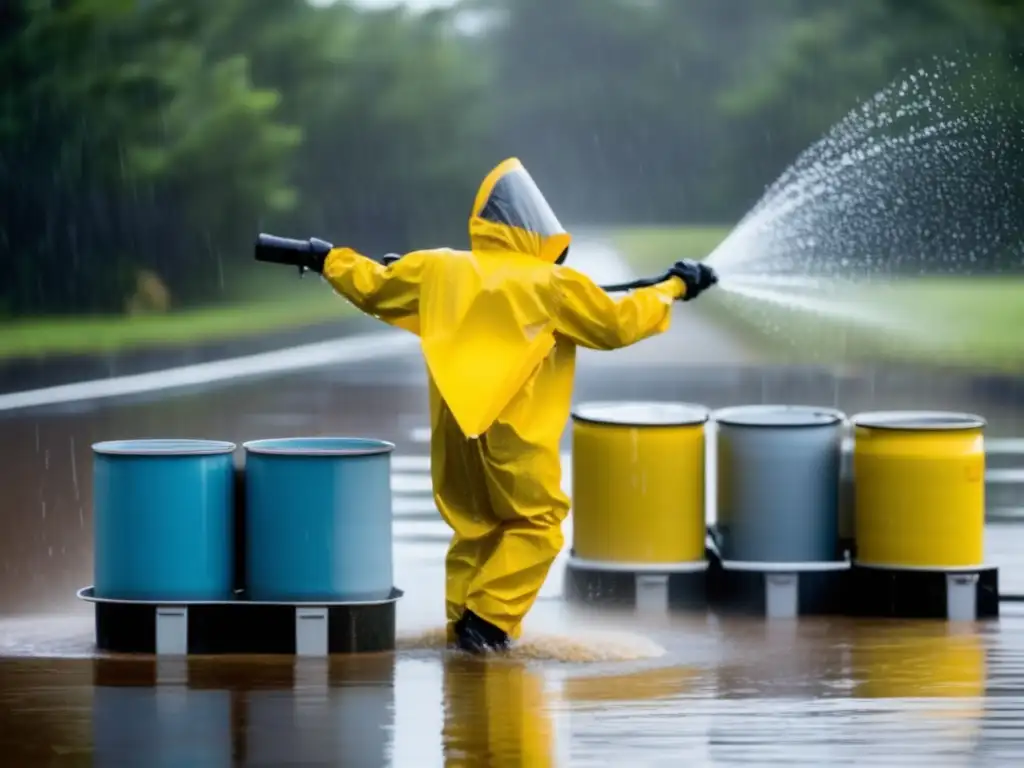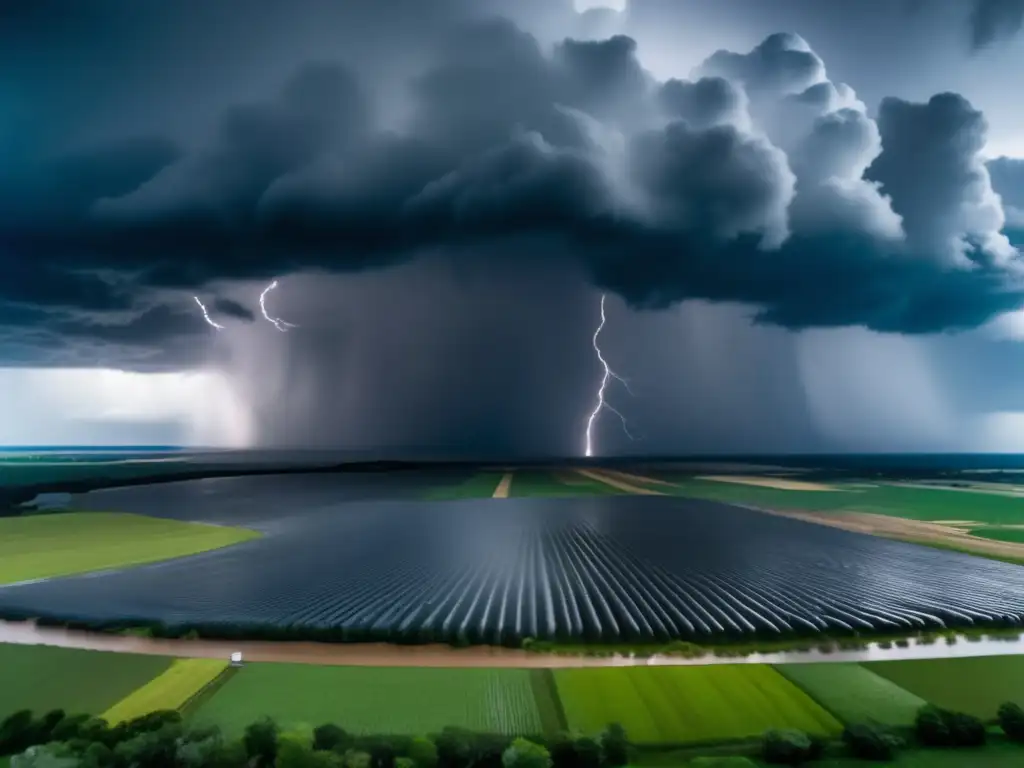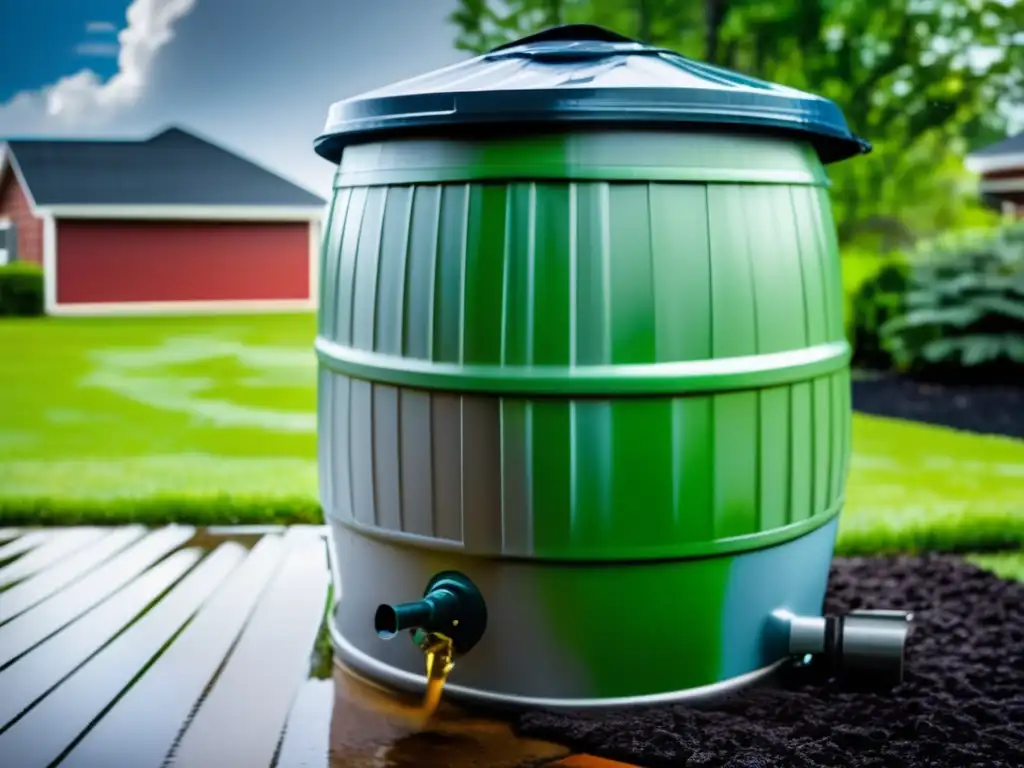Rain Harvesting: Utilizing Rainwater During Hurricanes

Rain Harvesting: Utilizing Rainwater During Hurricanes
Introduction
When hurricanes hit, they often bring heavy rainfall that can cause significant damage. But what if there was a way to use that water to our advantage? The practice of rain harvesting involves collecting and storing rainwater for later use, and during a hurricane, this could be a valuable resource. In this article, we'll explore the basics of rain harvesting, how it can be used during hurricanes, and its benefits.
What is Rain Harvesting?

The Basics
Rain harvesting is the collection of rainwater from rooftops, yards, or other surfaces, and its storage for later use. It's an ancient practice that has been used for thousands of years in arid regions, but it's becoming increasingly popular in other parts of the world as well.
The Components
A rain harvesting system typically includes a catchment surface, a conveyance system, and a storage tank. The catchment surface is the area where rainwater is collected, usually a rooftop or a paved surface. The conveyance system transports the rainwater from the catchment surface to the storage tank, where it's stored until needed.
The Benefits
Rain harvesting has a number of benefits, especially in areas where water is scarce or expensive. It reduces the need for municipal water supplies, which can help reduce costs, and it can also help prevent erosion and flooding by collecting excess rainwater. Additionally, rainwater is naturally soft and free of minerals, making it ideal for household tasks such as laundry and bathing.
Using Rain Harvesting During Hurricanes

Preparation
If you're considering rain harvesting during a hurricane, it's important to prepare in advance. Make sure your system is properly installed and maintained, and that your storage tank is large enough to accommodate the expected rainfall. You'll also need to ensure that your gutters and downspouts are clear of debris, so that rainwater can be efficiently collected.
During the Hurricane
During a hurricane, rain harvesting can help mitigate the effects of flooding by reducing the amount of runoff from your property. By collecting and storing rainwater, you can prevent excess water from flowing into streets and storm drains, which can help reduce the risk of flooding in your area. Additionally, if your water supply is disrupted during the storm, you'll have a source of clean water for household tasks.
After the Hurricane
After the hurricane has passed, your rain harvesting system can be used to collect rainwater for post-storm cleanup. This might include watering your plants or cleaning up debris from your yard. Additionally, if the municipal water supply is disrupted, you'll have a source of clean water for drinking and cooking.
The Benefits of Rain Harvesting During Hurricanes

Reduced Flooding
Rain harvesting can help reduce the risk of flooding during hurricanes by collecting excess rainwater and preventing it from flowing into streets and storm drains. This can help protect your property and reduce the risk of damage from flooding.
Water Supply
If your municipal water supply is disrupted during the hurricane, rain harvesting can provide a source of clean water for household tasks and drinking.
Eco-Friendly
Rain harvesting is an eco-friendly practice that reduces the need for municipal water supplies and helps prevent erosion and flooding by collecting excess rainwater.
Frequently Asked Questions

-
Is rainwater safe to drink?
Yes, rainwater is generally safe to drink if it's properly collected and stored. However, it's important to have your rainwater tested before consuming it, especially if you have a compromised immune system or are pregnant.
-
How do I maintain my rain harvesting system?
You should clean your gutters and downspouts regularly to prevent debris from clogging them. Additionally, you should inspect your storage tank periodically to ensure that it's clean and free of debris.
-
What size storage tank do I need?
The size of your storage tank will depend on your catchment area and the amount of rainfall you expect to receive. As a general rule, your storage tank should be large enough to hold at least one inch of rainfall from your catchment area.
-
Do I need a permit to install a rain harvesting system?
In some areas, you may need a permit to install a rain harvesting system. Check with your local government to find out what requirements apply in your area.
-
Can I use rainwater for my swimming pool?
Yes, rainwater is safe to use for swimming pools as long as it's properly treated with chemicals.
Conclusion
Rain harvesting is a valuable practice that can be used during hurricanes to mitigate the effects of flooding and provide a source of clean water for household tasks. By properly preparing your rain harvesting system in advance of the storm, you can help reduce the risk of damage from flooding and ensure that you have access to clean water in the event of a disruption to the municipal water supply. Additionally, rain harvesting is an eco-friendly practice that can help reduce your water bill and prevent erosion and flooding in your area.
For those living in hurricane-prone areas, rain harvesting is a valuable tool that should be considered as part of your overall hurricane preparedness plan. Be sure to follow best practices for installing and maintaining your rain harvesting system, and consult with local experts if you have any questions or concerns. Thank you for reading, and stay safe!
Additional Resources

 Homemade Solutions For Protecting Your Home From Hurricanes
Homemade Solutions For Protecting Your Home From Hurricanes Helping Hands: Getting Involved In Community Hurricane Preparedness
Helping Hands: Getting Involved In Community Hurricane Preparedness Securing Important Digital Data Before A Hurricane
Securing Important Digital Data Before A HurricaneIf you want to discover more articles similar to Rain Harvesting: Utilizing Rainwater During Hurricanes, you can visit the Hurricane preparedness: category.
Leave a Reply

Articulos relacionados: